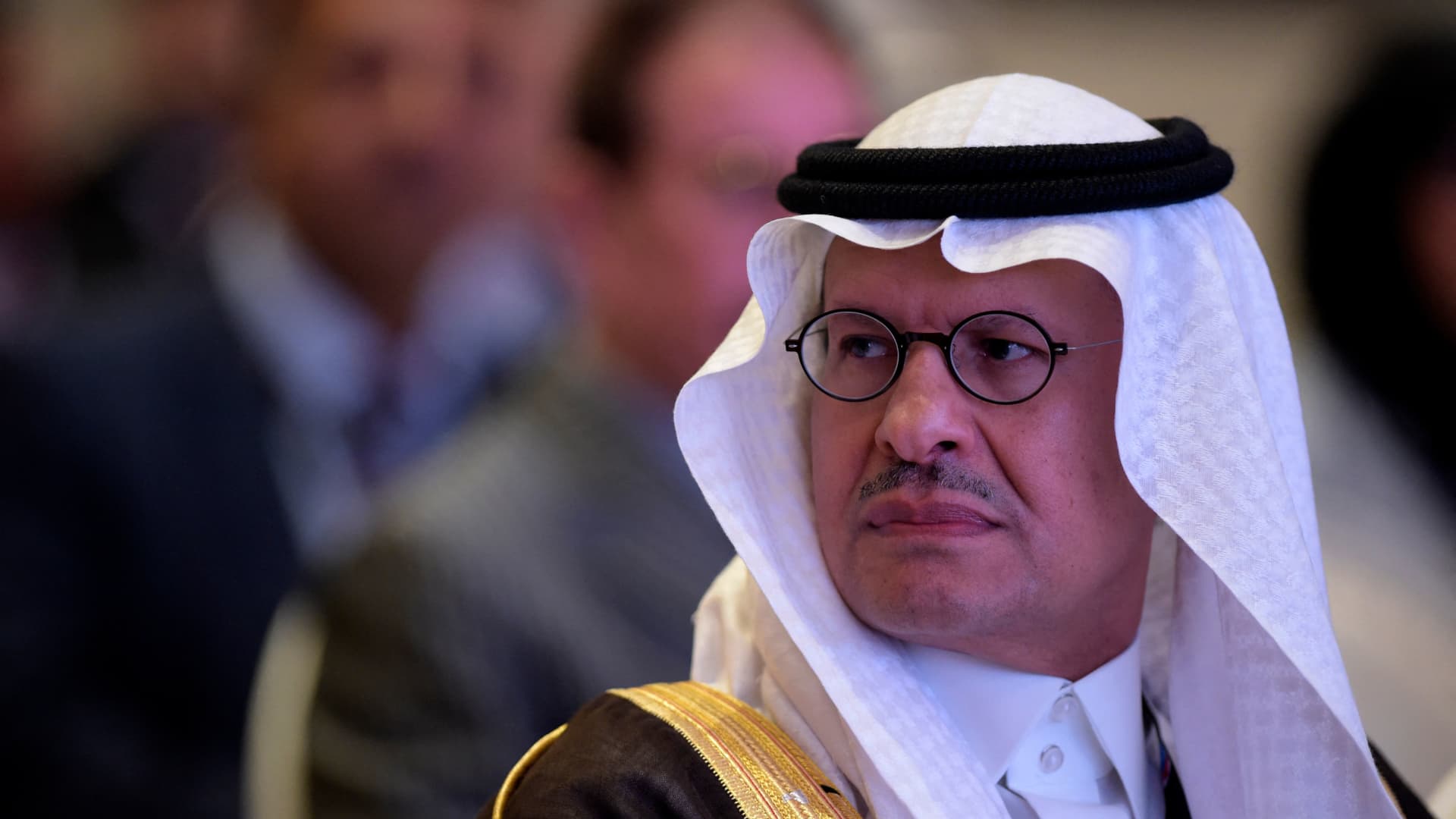OPEC+ Decision Looms As Big Oil Remains Unmoved On Production

Table of Contents
Big Oil's Stance: Profit Maximization Over Production Increases
Major oil companies are currently enjoying robust financial performance, driven by high crude oil prices. This has led to a strategic focus on profit maximization, rather than aggressively boosting oil production. Several factors contribute to this approach:
-
High profit margins: Current prices incentivize maintaining existing production levels to capitalize on lucrative margins. Increasing output could potentially flood the market, lowering prices and reducing overall profitability.
-
Cautious investment in new projects: Uncertainty surrounding future demand, geopolitical risks, and the long-term viability of fossil fuels have made oil companies hesitant to commit significant capital to new production projects. This cautious approach further limits their potential for increasing supply.
-
Shareholder returns: Big oil is prioritizing returning profits to shareholders through dividends and stock buybacks. This focus reflects a short-term strategy that prioritizes immediate financial rewards over long-term investments in expanding production capacity.
-
Concerns about future demand and price volatility: The transition to cleaner energy sources presents a long-term threat to the demand for oil. This uncertainty, coupled with the inherent volatility of the oil market, makes big oil reluctant to commit to increased production that might later prove unsustainable.
The OPEC+ Meeting: Balancing Act Between Supply and Geopolitics
The upcoming OPEC+ meeting is crucial in determining the future trajectory of oil prices. The key players – primarily Saudi Arabia and Russia – face a complex balancing act. They must consider global economic conditions, demand projections, and geopolitical factors when making their production decisions. The potential outcomes of the meeting are multifaceted:
-
Production cuts: A reduction in production quotas would likely lead to higher crude oil prices, benefiting OPEC+ member countries but potentially harming consuming nations.
-
Status quo: Maintaining current production levels would offer relative stability in the short term, but might not address the persistent supply concerns highlighted by high demand.
-
Production increases: An increase in production would likely lead to lower oil prices, benefiting consumers but potentially reducing profits for OPEC+ members.
The meeting will likely involve intense negotiations. Disagreements on production strategies could arise, particularly concerning Russia’s role given the ongoing sanctions. Saudi Arabia’s influence as a major producer and swing producer will be pivotal in shaping the final decision. The global economic outlook and demand projections will heavily influence the discussions. The geopolitical instability surrounding Ukraine and other global events will further complicate the decision-making process.
Impact on Crude Oil Prices: Market Predictions and Volatility
The OPEC+ decision will undoubtedly have a significant impact on crude oil prices. Predicting the exact outcome is challenging, but various scenarios are plausible:
-
Production cuts: Significant production cuts would likely lead to a noticeable increase in crude oil prices, potentially causing further market volatility.
-
Status quo: Maintaining current production levels would probably lead to relatively stable, albeit potentially high, oil prices.
-
Production increases: A considerable increase in production could trigger a price drop, potentially impacting the profitability of oil producers and investment strategies.
Futures contracts and market sentiment will play a key role in determining the immediate reaction to the OPEC+ decision. External factors, such as global economic growth, currency fluctuations, and unexpected geopolitical events, will also influence crude oil price trends. Investors should carefully consider these factors when developing their investment strategies in light of the different potential scenarios.
Conclusion: Navigating the Complexities of the Oil Market
The upcoming OPEC+ decision presents a critical juncture for the global oil market. The interplay between big oil's profit-maximizing strategy and OPEC+'s production adjustments will determine the direction of crude oil prices and impact various sectors of the global economy. Understanding the potential outcomes – from production cuts leading to higher prices to production increases resulting in price drops – is crucial for informed decision-making. Stay updated on the latest developments in the energy market by regularly checking our website for the latest OPEC+ news and analysis. Understanding the OPEC+ decision is crucial for navigating the complexities of the crude oil market and making informed investment choices related to oil production and crude oil price trends.

Featured Posts
-
 Analyzing The Grand Theft Auto Vi Trailer Frame By Frame
May 05, 2025
Analyzing The Grand Theft Auto Vi Trailer Frame By Frame
May 05, 2025 -
 Beterbiev Vs Bivol 2 Fight Results Parker Bakole Ko Highlights And Reactions
May 05, 2025
Beterbiev Vs Bivol 2 Fight Results Parker Bakole Ko Highlights And Reactions
May 05, 2025 -
 Year Two Serhiy Sideys Plans And Goals
May 05, 2025
Year Two Serhiy Sideys Plans And Goals
May 05, 2025 -
 Ufc 314 Fight Card Main Card And Prelims Bout Order Announced
May 05, 2025
Ufc 314 Fight Card Main Card And Prelims Bout Order Announced
May 05, 2025 -
 2025 Kentucky Derby Factors Influencing The Race Pace And Potential Outcomes
May 05, 2025
2025 Kentucky Derby Factors Influencing The Race Pace And Potential Outcomes
May 05, 2025
Latest Posts
-
 Effective Natural Remedies For Womens Bladder Control Primera
May 30, 2025
Effective Natural Remedies For Womens Bladder Control Primera
May 30, 2025 -
 Plires Programma Kyriakis 16 Martioy
May 30, 2025
Plires Programma Kyriakis 16 Martioy
May 30, 2025 -
 Addressing Bladder Issues Naturally Primera For Women
May 30, 2025
Addressing Bladder Issues Naturally Primera For Women
May 30, 2025 -
 Odigos Tileorasis Gia Tin Kyriaki 16 3
May 30, 2025
Odigos Tileorasis Gia Tin Kyriaki 16 3
May 30, 2025 -
 Nissans Electric Plans Could The Primera Return
May 30, 2025
Nissans Electric Plans Could The Primera Return
May 30, 2025
